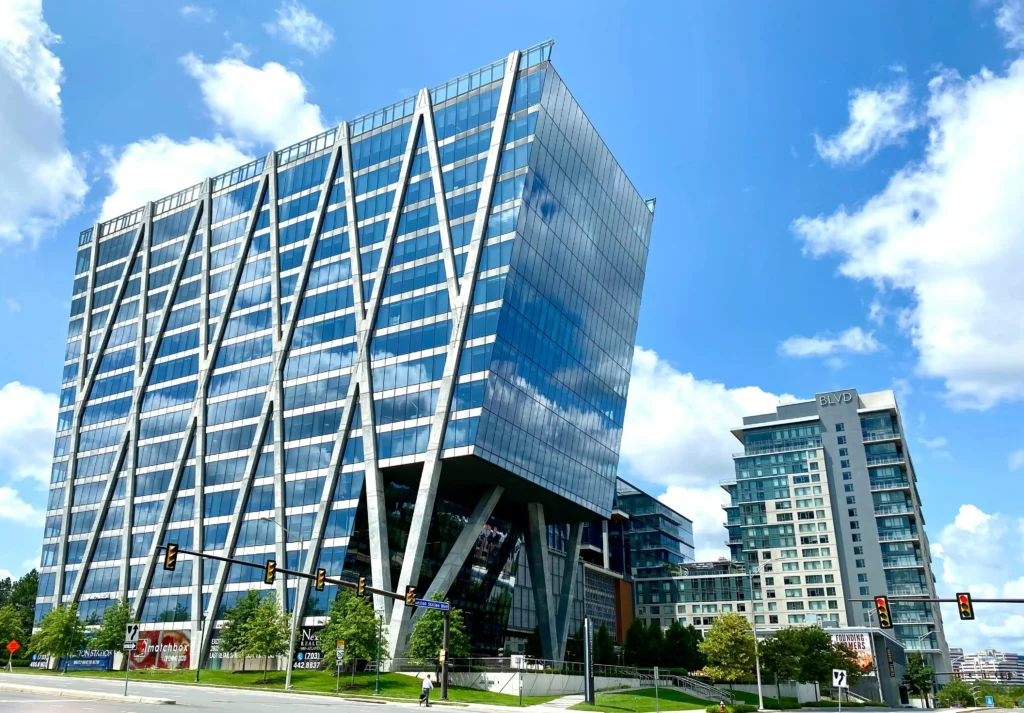The moment a real estate developer signs a contract with a new digital marketing agency is a moment of both significant investment and considerable uncertainty. The promises of increased leads, enhanced brand visibility, and a superior return on investment are compelling, but they are often followed by a critical, unspoken question from the C-suite: “What happens now?” A lack of transparency during the initial onboarding and strategy phase is a primary cause of friction and ultimately, failed agency-client relationships. Without a clear understanding of the process, expectations can become misaligned, and impatience can erode trust before the strategy has a chance to bear fruit.
This guide is designed to pull back the curtain. It provides a definitive, transparent roadmap of the first 90 days of a partnership with a high-caliber real estate performance marketing agency. This initial period is not about delivering instantaneous, miraculous results; it is about the meticulous and essential process of building a data-driven, strategic, and technically sound foundation. Understanding this methodical approach will empower you, as a real estate leader, to be an informed, active partner in your own success and to recognize the standard of excellence you should expect from your chosen digital marketing company for real estate.
Phase 1: Month 1 – The Foundation: Discovery, Strategy, and Setup
The first 30 days are the most critical. This phase is characterized by deep immersion, intensive analysis, and the architectural setup of your entire digital marketing ecosystem. It is about measuring twice before cutting once to ensure that every subsequent action is precise and purposeful.
Strategic Alignment and Governance
Before any technical work begins, a top-tier agency will establish a clear strategic and operational framework. This ensures both parties are perfectly aligned on goals, responsibilities, and the definition of success.
- Defining the Partnership (SOW & SOPs): The agency will work with you to finalize a detailed Statement of Work (SOW) that outlines all deliverables, timelines, and communication protocols. They will also establish Standard Operating Procedures (SOPs) for processes like content approval and reporting to ensure a smooth, efficient working relationship.
- Establishing Success Metrics (KRAs & KPIs): Your team and the agency will collaboratively define the Key Result Areas (KRAs) for the engagement and the specific Key Performance Indicators (KPIs) that will be used to measure success. This moves beyond vague goals to concrete, measurable targets, such as “Reduce Cost Per Lead by 20% in Q3” or “Increase organic traffic to project pages by 50% in 6 months.”
Deep-Dive Analysis: The Diagnostic Phase
With the strategic framework in place, the agency will launch a multi-faceted diagnostic analysis to understand your brand, your market, and your competition at a granular level.
- Technical & Content Analysis: Your website undergoes a thorough audit to identify any foundational issues hindering performance, such as slow page speed, broken links, or poor mobile usability. Simultaneously, your existing content is analyzed for quality, relevance, and SEO performance.
- Competitive & Gap Analysis: The agency will conduct a deep analysis of your key competitors’ digital strategies. They will identify what keywords your competitors are ranking for that you are not, what types of ad campaigns they are running, and what their social media strategy looks like. This reveals crucial gaps in your own strategy and opportunities to gain a competitive edge.
- Keyword & Audience Research: Extensive keyword research is performed to map out the entire search landscape for your projects. This goes beyond obvious terms to uncover long-tail keywords and user questions that indicate high intent. Concurrently, user behaviour is analyzed through tools like Google Analytics and Search Console to understand how your current audience finds and interacts with your site.
Fortifying Your Digital Asset: Website & SEO Optimization
Based on the analysis, the agency will begin the critical work of optimizing your primary digital asset: your website. Driving paid traffic to a flawed website is like pouring water into a leaky bucket.
- On-Page SEO & Content Enhancement: Existing webpage content is optimized to align with the findings of the keyword research. New, more comprehensive content may be added to key pages to improve their authority and relevance.
- Technical SEO Implementation: The agency will begin implementing technical fixes identified in the audit. This includes Schema Markup implementation to help Google understand your content better, and initial page speed optimization efforts to improve user experience.
- Authority Building & Local Presence: The off-page SEO work begins. This includes initial backlink creation and guest post outreach to build your website’s authority. For local projects, local citation building and a full optimization of your Google Business Profile (GMB) are prioritized to enhance visibility in local search and on Google Maps.
Paid Media & Social Media Architecture Setup
In parallel with the SEO and website work, the agency will construct the architecture for your paid media campaigns and social media presence.
- Ad Account Setup: Professional setup and configuration of your Google Ads, Meta (Facebook & Instagram) Ads, and LinkedIn Ads accounts, ensuring conversion tracking pixels and analytics are correctly installed. This is a foundational service of any competent real estate ppc agency.
- Campaign Structure: Based on the deep research, the initial search campaigns and display campaigns are structured with granular ad groups and tightly themed keywords for maximum relevance.
- Social Media Foundation: A full analysis of your existing social media presence is conducted. The agency will then optimize your social media handles, define brand guidelines for tone and visual aesthetics (including color schemes and video branding), and develop an initial social media calendar for organic content.
At the end of Month 1, a comprehensive report is delivered, summarizing all findings, the work completed, and the strategic plan for the launch of the first campaigns.
Phase 2: Month 2 – Launch, Learning, and Initial Optimization
With the foundational work complete, Month 2 is focused on campaign launch, data accumulation, and the first round of intelligent optimizations. This phase requires patience, as the platform algorithms enter a critical learning period.
The Campaign Launch and Algorithm Learning Phase
The paid media campaigns constructed in Month 1 are launched. It is essential to understand that platforms like Google and Meta have an algorithmic “learning phase,” which typically lasts for about 15 days after a new campaign starts. During this time, the platform is gathering data, testing different audiences, and learning which users are most likely to convert. Performance can be volatile during this period, and it is crucial to avoid making drastic changes until the learning phase is complete.
Data-Driven Analysis in Real-Time
While the algorithms learn, the agency team is actively monitoring the influx of initial data. This is not a passive waiting period. They are analyzing:
- Search Term Reports: Scrutinizing the actual search queries that trigger your ads to identify new negative keywords and eliminate wasted spend on irrelevant clicks.
- User Behaviour: Watching how users who click the ads interact with your landing pages. Are they bouncing immediately? Are they engaging with the content?
- Creative Performance: Identifying which ad headlines, descriptions, and images are generating the highest click-through rates and engagement.
The First Wave of Optimizations
Towards the end of the month, once enough data has been gathered, the first intelligent optimizations are made. This is a data-driven process, not guesswork. It includes pausing underperforming ad creatives, reallocating small portions of the budget from less effective ad groups to early winners, and refining audience targeting based on initial demographic and interest data. The monthly report will detail these initial findings and the corresponding optimizations made.
Phase 3: Month 3 – Strategic Refinement and Scaling
Month 3 is where the strategic partnership truly begins to accelerate. With a solid month of performance data from the launched campaigns, your agency can now move from broad optimization to surgical refinement and strategic scaling.
Deep-Dive Performance Review
The month begins with a deep dive into the previous month’s performance. The focus shifts from surface-level metrics to business impact. The analysis seeks to answer critical questions:
- Which specific audience segments are delivering the highest quality leads?
- Which ad messaging is resonating most strongly with our ideal buyer persona?
- What is the true Cost Per Qualified Lead (CPQL), not just the overall Cost Per Lead (CPL)?
Strategic Scaling and A/B Testing
Based on this deep analysis, a clear plan for scaling and testing is developed.
- Scaling What Works: The agency will recommend strategically increasing the budget on the campaigns, ad groups, and keywords that have proven to be the most profitable and efficient. This ensures you are doubling down on success.
- Pausing What Doesn’t: Conversely, underperforming elements are paused to eliminate budget wastage and improve overall campaign ROI.
- Implementing A/B Tests: More structured A/B tests are launched on landing pages—testing different headlines, call-to-action buttons, or forms—to systematically improve the website’s conversion rate.
Continued Website and SEO Momentum
While paid campaigns are being refined, the foundational SEO work continues to build long-term value. This includes publishing the first on-site blogs to build topical authority, continuing off-page outreach for backlinks, and performing monthly technical checks to ensure website speed and health remain optimal.
At the end of this 90-day period, you will receive a comprehensive quarterly business review. This report will not only showcase the work done and the results achieved but will also lay out a clear, data-driven strategic roadmap for the next quarter.
The Foundation for Predictable Growth
The first 90 days of a partnership with a premier real estate digital marketing agency are a period of intense, foundational work. It is a methodical process of deconstruction, reconstruction, and optimization. The objective is not to deliver a fleeting, miraculous spike in leads, but to build a resilient, data-driven, and highly efficient marketing engine. This initial investment in strategy, technical soundness, and meticulous setup is what creates the foundation for the predictable, scalable, and profitable growth that follows.
If this 90-day blueprint aligns with your expectations for a transparent and strategic partnership, then it is time to begin the conversation.
Frequently Asked Questions
1. How soon can we expect to see leads after hiring a new digital marketing agency?
While the goal is to generate leads as efficiently as possible, it’s crucial to set realistic expectations. The first month is dedicated to foundational work—strategy, research, technical setup, and building campaigns. You should not expect significant lead volume in Month 1. The first leads will typically start to come in during Month 2, after campaigns are launched and the platform’s initial “learning phase” is underway. The primary focus in Month 3 and beyond is to systematically increase the volume and, more importantly, the quality of these leads based on performance data.
2. What level of involvement and input will be required from my team during the first 90 days?
Your team’s involvement is most critical during the first month. A successful onboarding requires a collaborative partnership. Your agency will need:
- Strategic Input: Participation from key stakeholders in initial discovery sessions to define goals, KPIs, and target audience personas.
- Access & Credentials: Prompt provision of access to your website backend, analytics accounts, social media profiles, and ad accounts.
- Brand Assets: Access to your brand guidelines, logos, high-resolution property images, videos, and existing marketing collateral.
- Timely Feedback: Efficient review and approval of strategic documents, content calendars, and ad creatives to keep the project on schedule.
After the initial setup, your required involvement will typically shift to regular weekly or bi-weekly strategic review meetings.
3. What are the key signs of a successful agency partnership in the first month, even before major results are in?
In Month 1, success is measured by process and strategy, not performance metrics. Key signs of a healthy partnership include:
- Thorough Onboarding: The agency conducts deep discovery sessions to understand your business, not just your marketing.
- Clear Documentation: You receive and sign off on a detailed Statement of Work (SOW), and a plan outlining KPIs and deliverables.
- Proactive Communication: The agency establishes a clear communication rhythm and provides regular updates on progress.
- Strategic Insights: The initial audits (technical, competitive, keyword) provide you with new insights into your market position that you didn’t have before.
A great agency delivers strategic value and builds confidence long before the first campaign goes live.
4. The blog mentions a “technical audit” in Month 1. What does this involve, and why is it necessary?
A technical SEO audit is a comprehensive health check of your website’s backend infrastructure. It’s necessary because sending expensive ad traffic to a technically flawed website is a major source of wasted budget. The audit involves analyzing critical factors like:
- Site Speed: How quickly your pages load for users.
- Mobile-Friendliness: How well your site performs on mobile devices.
- Crawlability & Indexability: Ensuring Google can easily find and understand all your important pages.
- Schema Markup: Checking for correct implementation to help you earn rich snippets.
- Site Security (HTTPS): Ensuring your site is secure for users.
Fixing these issues is foundational to the success of both long-term SEO and short-term PPC campaigns.
5. Why does an agency spend the entire first month on “strategy and setup” instead of immediately launching ads?
Launching ads without a strategic foundation is the fastest way to waste your budget. The intensive first month is dedicated to “measuring twice and cutting once.” This process ensures that when the ads are launched, they are highly targeted, sent to an optimized landing page, and tracked accurately. Skipping the research, analysis, and setup phase is like building a house without a blueprint—it might go up quickly, but it will be structurally unsound and inefficient.
6. How is our ad budget utilized during the “learning phase” in Month 2?
During the initial 15-day learning phase, your ad budget is used by platforms like Google and Meta to gather data. The algorithm is testing thousands of variables to learn who is most likely to engage with your ads and convert. While some of this spend may go to less-than-perfect audiences, it is a necessary investment. A skilled real estate ppc agency will manage this phase carefully, using a controlled budget to gather the necessary data, which then allows them to make informed, data-driven optimizations to improve efficiency and ROI for the remainder of the campaign.
7. What should a comprehensive monthly report from a real estate performance marketing agency look like?
A comprehensive report should be a business review, not just a data sheet. It must include:
- An Executive Summary: A top-level overview of performance against the established KPIs.
- Performance by Channel: A breakdown of results from Google Ads, Meta Ads, SEO, etc.
- Focus on Business Metrics: Prioritizing metrics like Leads, Cost Per Lead (CPL), and Conversion Rate over vanity metrics like impressions.
- Key Insights & Analysis: An explanation of why performance was what it was. What worked? What didn’t?
- Action Plan: A clear outline of the strategic priorities and optimizations planned for the next month.
8. Why does the 90-day plan include both long-term SEO activities and immediate PPC campaigns?
This dual approach is designed to deliver results in both the short and long term.
- PPC Campaigns are designed to generate leads and data quickly. They provide immediate traffic and allow us to test which messaging and audiences are most effective.
- SEO Activities (like content creation, technical fixes, and backlink building) are an investment in building a long-term, sustainable asset. A top ranking on Google can provide a steady stream of “free” organic leads for years to come.
A professional real estate digital marketing agency runs these two strategies in parallel to ensure you are getting immediate results while building a valuable asset for the future.
9. What is the most common reason for a new client-agency relationship to fail in the first 90 days?
The most common reason for failure is a misalignment of expectations, typically stemming from poor communication. This happens when a client expects immediate, dramatic results, and the agency fails to properly communicate the importance and timeline of the foundational setup phase. A successful partnership is built on transparency and a shared understanding that the first 90 days are about building a strategic engine for growth, not just pulling a lever for instant leads.
10. Beyond the 90-day plan, how does a top-tier digital marketing company for real estate provide ongoing value?
Beyond the initial 90 days, the value of a top-tier agency shifts from setup to continuous, data-driven growth. Ongoing value is provided through:
- Proactive Scaling: Identifying and scaling the most profitable campaigns to drive incremental growth.
- Continuous Testing & Innovation: Constantly A/B testing new ad creatives, landing pages, and audience segments to beat previous performance benchmarks.
- Strategic Adaptation: Staying ahead of market trends, competitor actions, and platform algorithm changes to ensure your strategy remains effective.
- Deeper Insights: Using accumulated data to provide strategic insights that can inform your broader business decisions, such as identifying new, untapped markets or buyer personas.



